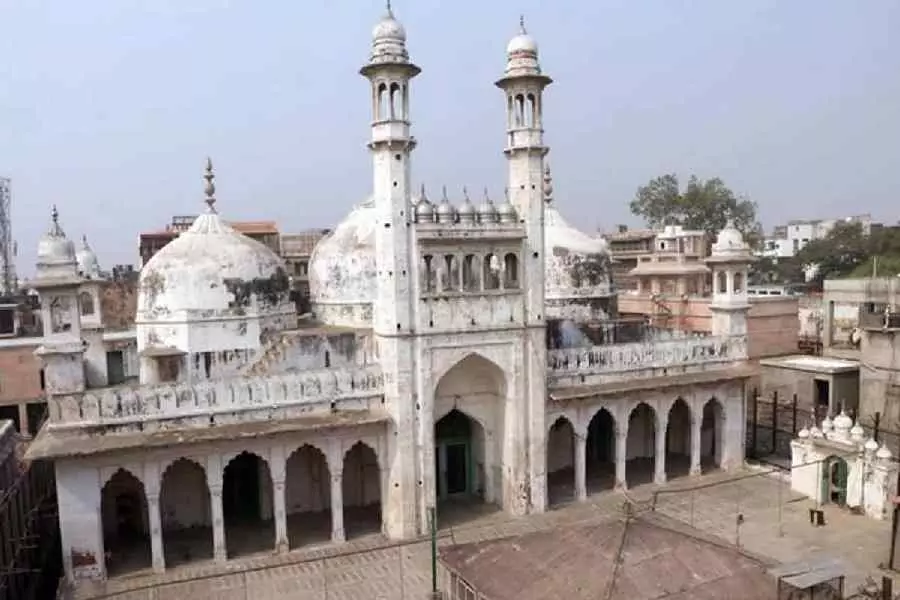
ASI Gyanvapi mosque report not court verdict: Anjuman Committee

Varanasi (UP), Jan 26 (PTI) The Gyanvapi masjid committee on Friday said the ASI survey of the mosque, which Hindu side lawyers claim was built on the remains of a pre-existing temple, is just a report and not a judgment.
The Anjuman Intezamia Masajid Committee said they are studying the ASI survey report after which they would make comments.
Mohd Yasin, secretary of the committee which manages the Gyanvapi mosque in Varanasi, said, "This is just a report and not a 'faisala' (judgment). There are several kinds of reports. It is not the final word on the issue." He said they would present their views when the Supreme Court hears the matter relating to the Places of Worship (Special Provisions) Act, 1991.
The Act mandates that the "religious character" of a place, except the Ram temple in Ayodhya, cannot be changed from what existed on August 15, 1947.
Responding to the latest developments, BJP leader and Union minister Giriraj Singh on Friday said Muslims should hand over the Gyanvapi mosque site to Hindus, and said no statements should be made that can disrupt communal harmony.
Lawyers of the Hindu petitioners in the Kashi Vishwanath-Gyanvapi case on Thursday claimed that the report of a scientific survey by the Archaeological Survey of India (ASI) suggests the mosque was built on the remains of a pre-existing temple.
Vishnu Shankar Jain, representing four women petitioners in the case, said the 839-page report makes it clear that the mosque, which stands adjacent to the Kashi Vishwanath Mandir, was built on the remains of a grand Hindu temple after it was demolished in the 17th century during the reign of Aurangzeb.
He further claimed that the survey report has sufficient evidence of the existence of a temple at the place where the mosque now stands.
Madan Mohan Yadav, a lawyer representing one of the Hindu petitioners, Rakhi Singh, said during the survey, evidence has been found at 32 places suggesting the existence of a temple there.
Jain claimed debris of the statues of Hindu gods had been found in two basements during the survey. Some parts of the pre-existing temple including pillars were used in the construction of the Gyanvapi mosque, he added.
He claimed the order and the date of demolition of the temple are inscribed on stone in Persian language. A stone with "mahamukti" inscribed on it has also been found.
Jain further claimed that the western wall in the rear side of the mosque is the wall of the pre-existing temple. A "ghanta" (a large size bell) and a "swastik" symbol are inscribed on the wall, he said, adding that the report says the roof of the basement is placed on pillars of temples in Nagara style.
"These evidence indicate that when the temple of Adivishwara was demolished by Aurangzeb in the 17th century, a grand temple was pre-existing there," Jain claimed.
He said they would appeal in the court for a survey of the wazu khana, where ablutions are performed before namaz. On the basis of the report, they would present their side by placing evidence before the court during the next hearing on February 6, he added.
The ASI report says, "Based on the scientific studies and observations - central chamber and main entrance of the pre-existing structure is existing structure, western chamber and western wall, reuse of pillars and pilasters of pre-existing structure in the existing structure, inscriptions on the existing structure, Arabic and Persian inscription on the loose stone, sculptural remains in cellars, etc - it can be said that there existed a large Hindu temple, prior to the construction of the existing structure." Remains of a bird figure carved on the doorsill appears to be that of a cock, the report says, and adds that the western wall of the existing structure is the remaining part of a pre-existing Hindu temple. This wall, made of stones and decorated with horizontal moulding, is formed by remaining parts of the western chamber, western projections of the central chamber and western walls of the two chambers on its north and south. Central chamber attached to the wall still exists unchanged whereas modifications have been made to both the side chambers.
According to the report, the pillars and pilasters used in the existing structure were studied systematically and scientifically. For the enlargement of the mosque and constructing sahan, parts of the pre-existing temple including pillars and pilasters were reused with little modifications. Minute study of the pillars and pilasters in the corridor suggest that they were originally part of the pre-existing Hindu temple, it says.
For their reuse in the existing structure, vyala figures carved on either side of lotus medallion were mutilated and after removing the stone mass from the corners that space was decorated with floral design. This observation is supported by two similar pilasters still existing on the northern and southern walls of the western chamber in their original place, the ASI report says.
During the survey, the report says, a number of inscriptions were noticed on the existing and pre-existing structure. These are, in fact, inscriptions on the stones of the pre-existing Hindu temples, which have been reused during the construction/repair of the existing structure. They include inscriptions in Devnagari, Grantha, Telugu and Kannada scripts, it adds. PTI

